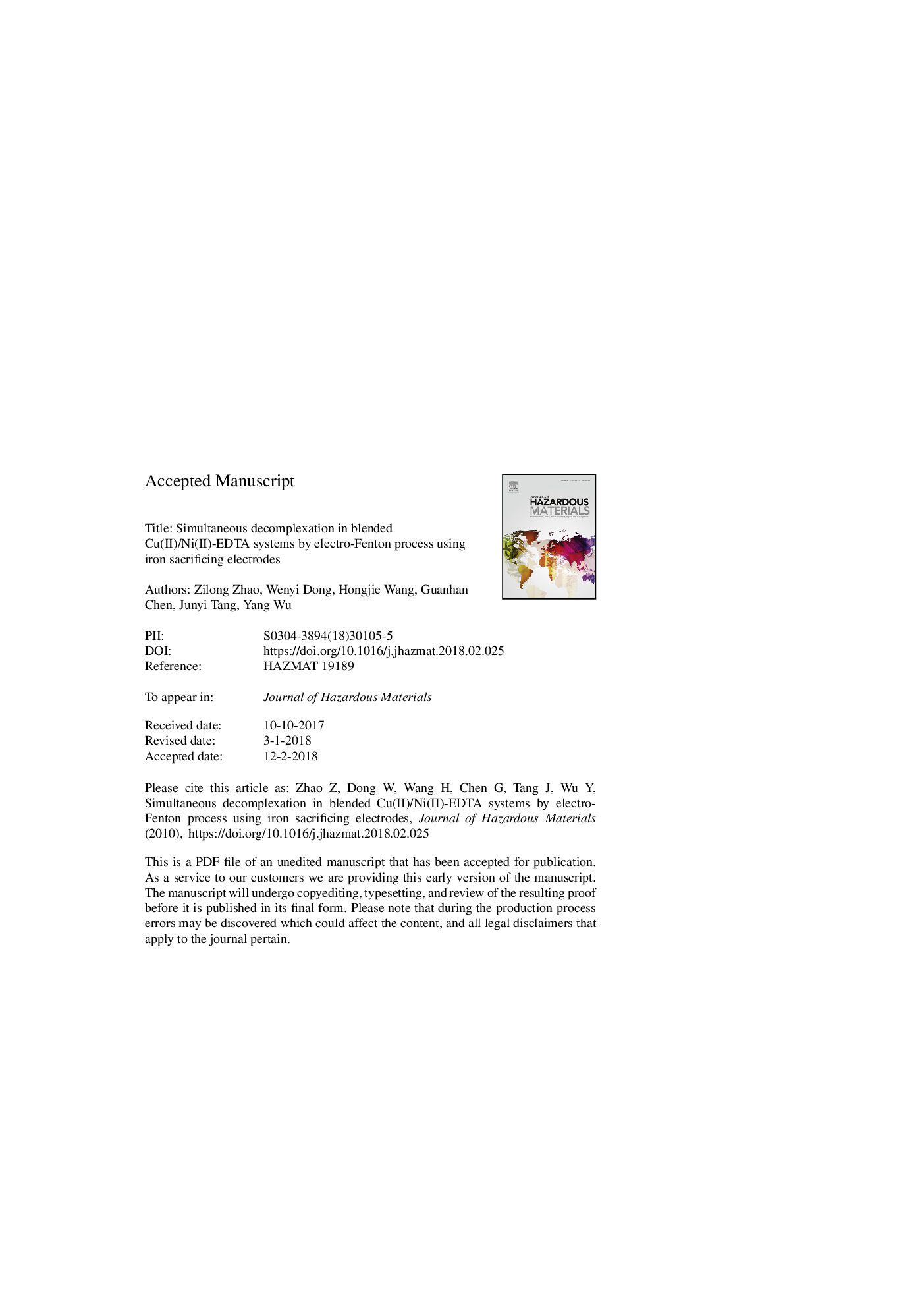| Article ID | Journal | Published Year | Pages | File Type |
|---|---|---|---|---|
| 6968847 | Journal of Hazardous Materials | 2018 | 32 Pages |
Abstract
This research explored the application of electro-Fenton (E-Fenton) technique for the simultaneous decomplexation in blended Cu(II)/Ni(II)-EDTA systems by using iron sacrificing electrodes. Standard discharge (0.3â¯mgâ¯Lâ1 for Cu and 0.1â¯mgâ¯Lâ1 for Ni in China) could be achieved after 30â¯min reaction under the optimum conditions (i.e. initial solution pH of 2.0, H2O2 dosage of 6â¯mLâ¯Lâ1â¯hâ1, current density of 20â¯mA/cm2, inter-electrode distance of 2â¯cm, and sulfate electrolyte concentration of 2000â¯mgâ¯Lâ1). The distinct differences in apparent kinetic rate constants (kapp) and intermediate removal efficiencies corresponding to mere and blended systems indicated the mutual promotion effect toward the decomplexation between Cu(II) and Ni(II). Massive accumulation of Fe(â
¢) favored the further removal of Cu(II) and Ni(II) by metal ion substitution. Species distribution results demonstrated that the decomplexation of metal-EDTA in E-Fenton process was mainly contributed to the combination of various reactions, including Fenton reaction together with the anodic oxidation, electro-coagulation (E-coagulation) and electrodeposition. Unlike hypophosphite and citrate, the presence of chlorine ion displayed favorable effects on the removal efficiencies of Cu(II) and Ni(II) at low dosage, but facilitated the ammonia nitrogen (NH4+-N) removal only at high dosage.
Related Topics
Physical Sciences and Engineering
Chemical Engineering
Chemical Health and Safety
Authors
Zilong Zhao, Wenyi Dong, Hongjie Wang, Guanhan Chen, Junyi Tang, Yang Wu,
